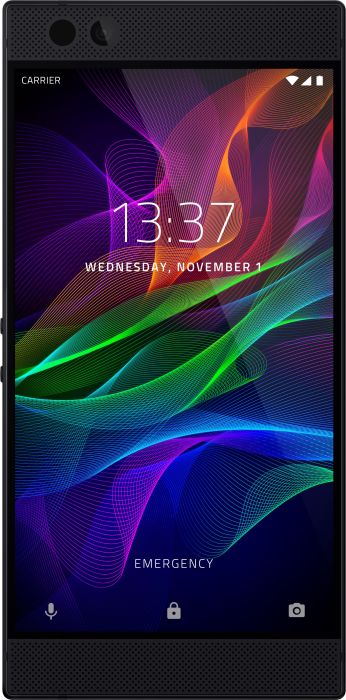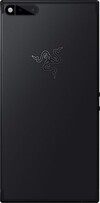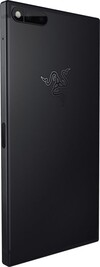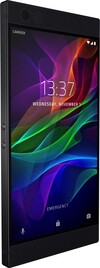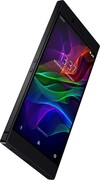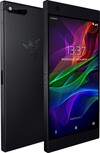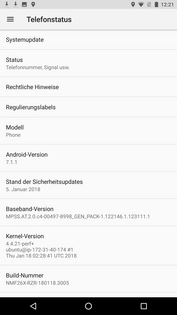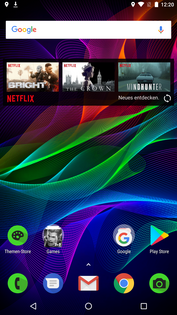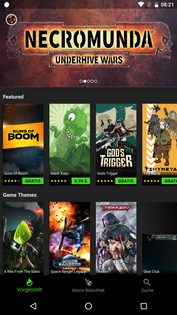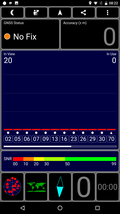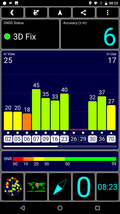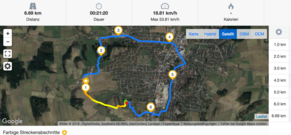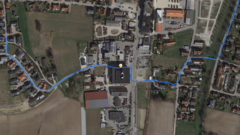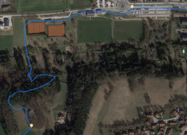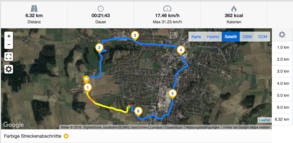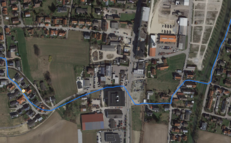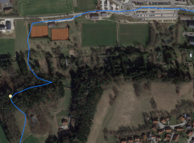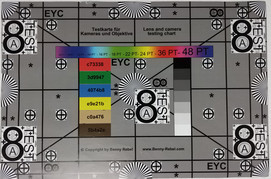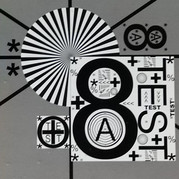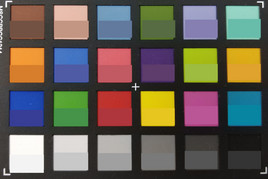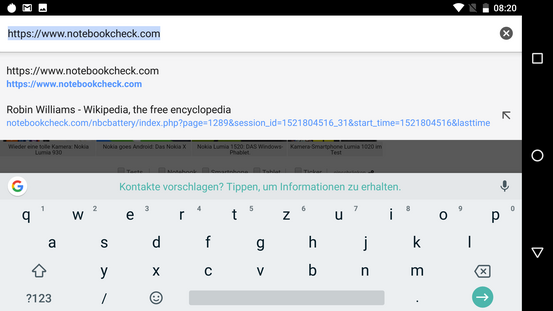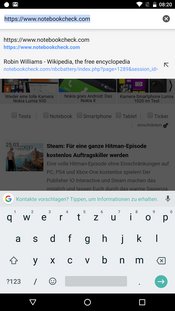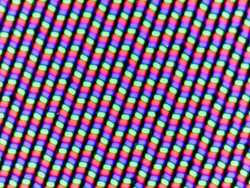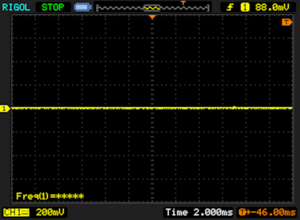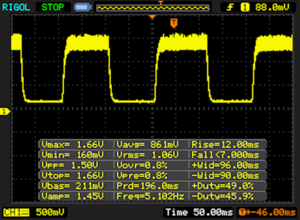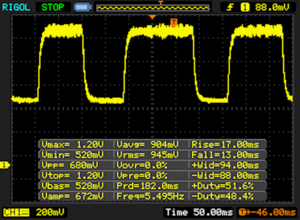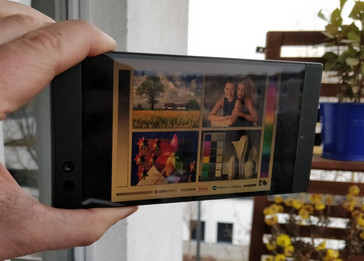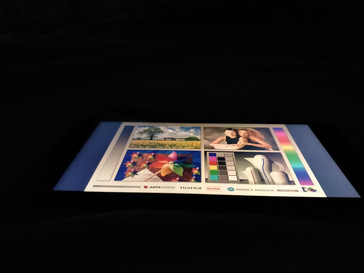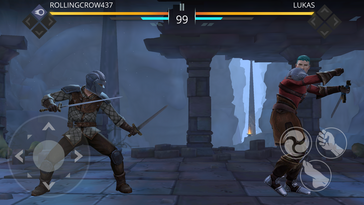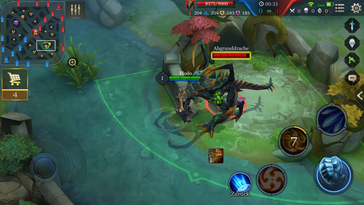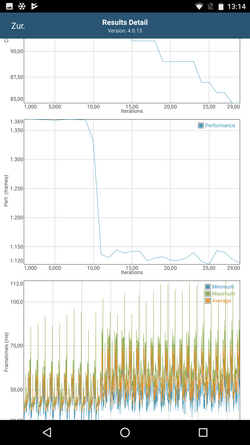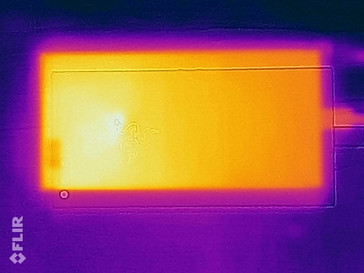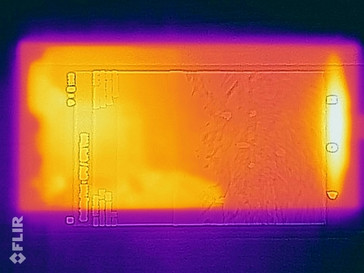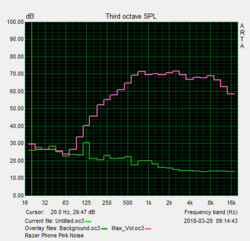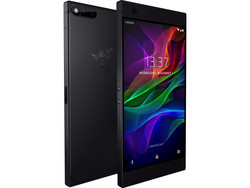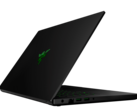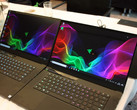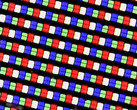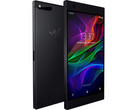Razer Phone 2017 Smartphone Review
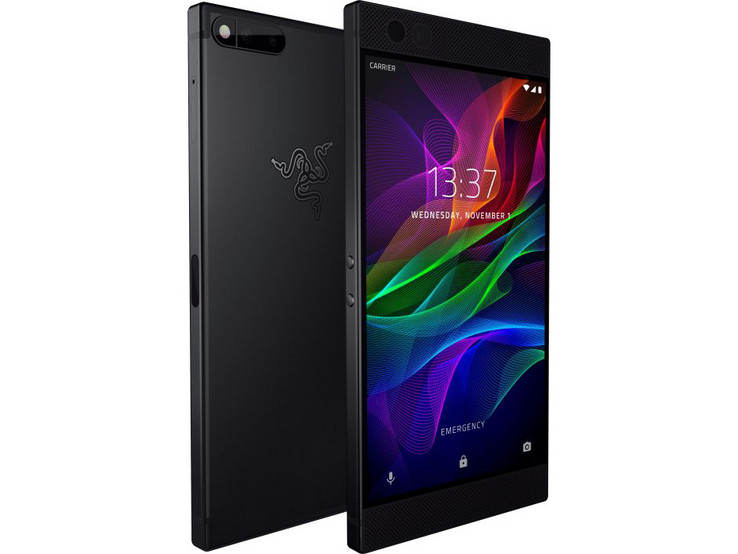
In the recent years, mobile gaming has evolved to more than just a meaningless buzzword and yet dedicated gaming smartphones are conspicuously rare. Sony and Microsoft are big players in the mobile gaming sphere, but their innovations are limited to software only and dedicated gaming smartphones are practically nonexistent. Or rather were, because Razer, a manufacturer that became a big player in the industry thanks to its gamer-centric notebooks and peripherals, has decided to tackle this issue head-on: say Hello to the Razer Phone. A smartphone equipped with a 120 Hz display, Dolby Atmos, and state-of-the-art hardware created specifically to address the requirements of mobile gaming. In name it bares resemblance to the 2004 Motorola Razr v3, which, while a very slim phone, has absolutely nothing in common with Razer’s current series of gaming smartphones. The phone sells for $700 on Razer’s website, and its price has remained surprisingly stable since last year’s launch. Razer laptops are a favorite among gamers, but does that also apply to the Razer Phone? Let us find out.
At its price point, the arena is filled with the crème de la crème of premium smartphones; among others the OnePlus 5T that can be had for up to $200 less, the iPhone 8 Plus, the Samsung Galaxy S8 Plus, and the Huawei Mate 10 Pro.
Case
Razer is the manufacturer behind high-quality gaming notebooks such as the Razer Blade or premium gaming accessories such as the Razer Chroma keyboards. Accordingly, our expectations for the new Razer Phone were quite high, and suffice it to say they were met. The entire case is made of metal and clad in black, with the Razer logo displayed prominently on the back. The design is fairly plain with a distinct lack of flashy lighting effects and other shenanigans. Thus, it does not necessarily look like a gaming phone per se. At 197 g (~7 oz) it is not the lightest, but it feels quite nice and hefty in hand.
Its rectangular design sets it apart from the masses without sacrificing ergonomics along the way. The most prominent front-facing design elements are the two speaker grills below and above the display. The case was very rigid by and large and only warped ever so slightly, and the display is well protected from all sides.
Connectivity
8 GB of RAM is plenty for a smartphone, and it is what we would have expected of a gaming smartphone. How else are you supposed to keep multiple games open without saving and quitting? Storage capacity is just 64 GB, which is on the low side in our opinion. The OnePlus 5T can be purchased with up to 128 GB and the iPhone 8 Plus even with up to 256 GB. At least Razer Phone supports microSD expansion, which can be formatted as an internal or an external storage. If formatted and mounted as an internal storage, the microSD card can be used to offload apps.
The USB 3.1 Gen 1 Type-C port at the bottom turned out to be very fast.
Software
By default, the phone comes preinstalled with Android 7.1.1 and the Nova Launcher, which is available in the Google Play Store for all other smartphones as well. The launcher is highly configurable and can be customized with free and paid-for themes from the Razer Theme store. Razer has promised to roll out the Android 8 update in the first quarter of 2018 but it was nowhere to be seen at the time of writing. Security patches were somewhat up-to-date and with the exception of a few games and the Game Booster, there is no additional preloaded software to be found on the phone.
Communication and GPS
Connected to a Wi-Fi router, the Razer Phone was very fast not just when connected to our reference router but also in real-world situations: websites loaded in the blink of an eye. At a distance of 10 m (~33 ft) to the router and with several walls in-between, loading times were slightly longer. Signal strength was around 50% in this scenario.
The phone lacks a second SIM slot and supports LTE Cat. 12 with a plethora of frequencies and data speeds up to 600 Mbps. Thanks to its support for a wide variety of LTE bands, the Razor Phone should have no trouble connecting to networks overseas.
GPS location was unavailable indoors, even when standing at the window. Outdoors, obtaining GPS lock took a few seconds and at 6 m (~20 ft), the GPS was fairly accurate.
We pitch every smartphone against a professional Garmin Edge 500 GPS made specifically for cyclists on a bicycle tour around the neighborhood. The Razer Phone was nowhere near as accurate as the Garmin Edge, but it was decent enough to be considered usable as everyday satnav.
Telephony and Call Quality
In addition to all the gaming bells and whistles, the Razer Phone is still a phone first and foremost. Unfortunately, call quality turned out to be something of a mixed bag. One the one hand, the earphone experience was extremely poor. Our conversational partners sounded as if they were far away from their phone. Maximum volume was decent, but distortions and static ruined the experience completely. The microphone overamplified loud voices considerably but had no trouble recording low volume sounds. After activating the speakerphone, the results were quite the opposite: we were able to understand our conversational partners loud and clear, and sound quality was amazing. However, the microphone now failed to even detect low volume input at all.
Cameras
The main rear-facing dual-camera features two 12 MP sensors. Photos taken with it turned out very sharp and natural; unlike for example the iPhone X’s oversaturated loud colors. The secondary telephoto lens can be used to zoom in on details, and the camera is equipped with a dual-tone LED flash.
The 8 MP front-facing camera was basically the same - decent colors, and photos were sharp and in focus.
Videos are recorded in 4K, and both rear-facing lenses can be used for video recording. You can even switch between them while filming. Color representation was decent, and the ambient light sensors responded quickly and accurately to changes in lighting. The front-facing camera only supports video recording in 1080p.
When tested in our lab under normalized conditions, uniform surfaces turned out somewhat blotchy and focus was not always 100% accurate. Colors were too bright overall, but we would still consider them to look fairly natural.
By and large the Razer Phone’s camera is adequate for a premium smartphone.
Accessories and Warranty
Included in the box is a high-quality USB-C to 3.5-mm adapter for connecting headphones to the Razer Phone. The built-in DAC is supposed to be of very high quality and it is supposedly also THX-certified. The USB-C charger and corresponding USB-C cable (USB-C at both ends) are great for charging the device. However, the cable cannot be used for connecting the Razer Phone to notebooks or desktop computers without at least a single USB-C port. Consequently, a dongle will be required in order to achieve this. A headset is not included.
By default, devices sold in Europe come with a 2-year limited warranty while US customers are once again deprived of that second year and limited to a 1-year warranty. Please see our Guarantees, Return Policies and Warranties FAQ for country-specific information.
Input Devices & Handling
The virtual GBoard keyboard is provided by Google, which we applaud. The keyboard is well-arranged and powerful, thanks to a multitude of settings. The touchscreen was very smooth and detected input reliably up to its very edges. Gestures are supported by the Razer Phone but the choice is very limited.
Embedded into the power button on the side is a fingerprint reader - a design concept that Sony has also used on some of their phones. Simply placing your finger on top of the button does not unlock the phone: you also have to press the button. This way it is much less likely to unlock the phone accidentally and we must admit that we got used to it very quickly.
Display
The oddly sized 2560x1440 16:9 display measures exactly 5.72 inches diagonally. In order to conserve power, the resolution can be lowered in the settings menu. The display was amazingly sharp, however small fonts and objects were sometimes a bit too small. This, too, can be addressed in the settings. Maximum brightness was somewhat low at just 436 nits but at least at 92% it was very evenly distributed, and we have failed to notice any differences in brightness.
The phone’s highlight is its support for 120 FPS, allowing for very smooth and completely stutter-free gaming. It worked very well if the game or app in question supported it. We did not notice any screen flickering and response times although very fast, were a little bit too slow for fast-paced games.
| |||||||||||||||||||||||||
Brightness Distribution: 92 %
Center on Battery: 436 cd/m²
Contrast: 2725:1 (Black: 0.16 cd/m²)
ΔE ColorChecker Calman: 3.88 | ∀{0.5-29.43 Ø4.78}
ΔE Greyscale Calman: 5.8 | ∀{0.09-98 Ø5}
97.9% sRGB (Calman 2D)
Gamma: 2.45
CCT: 7657 K
| Razer Phone 2017 IGZO LCD, 120 Hz, Wide Color Gamut, 1440x2560, 5.7" | Apple iPhone 8 Plus IPS, 1920x1080, 5.5" | OnePlus 5T AMOLED, 2160x1080, 6" | Samsung Galaxy S8 Plus Super AMOLED, 2960x1440, 6.2" | Huawei Mate 10 Pro OLED, 2160x1080, 6" | |
|---|---|---|---|---|---|
| Screen | 9% | 26% | 42% | 45% | |
| Brightness middle (cd/m²) | 436 | 559 28% | 425 -3% | 560 28% | 629 44% |
| Brightness (cd/m²) | 417 | 538 29% | 423 1% | 562 35% | 636 53% |
| Brightness Distribution (%) | 92 | 90 -2% | 92 0% | 93 1% | 94 2% |
| Black Level * (cd/m²) | 0.16 | 0.38 -138% | |||
| Contrast (:1) | 2725 | 1471 -46% | |||
| Colorchecker dE 2000 * | 3.88 | 1.3 66% | 2.1 46% | 1.7 56% | 1.7 56% |
| Colorchecker dE 2000 max. * | 7.96 | 2.7 66% | 3.4 57% | 3.4 57% | 3.6 55% |
| Greyscale dE 2000 * | 5.8 | 1.8 69% | 2.5 57% | 1.6 72% | 2.4 59% |
| Gamma | 2.45 90% | 2.25 98% | 2.32 95% | 2.13 103% | 2.15 102% |
| CCT | 7657 85% | 6797 96% | 6455 101% | 6435 101% | 6337 103% |
| Color Space (Percent of AdobeRGB 1998) (%) | 81.57 | ||||
| Color Space (Percent of sRGB) (%) | 99.87 |
* ... smaller is better
Screen Flickering / PWM (Pulse-Width Modulation)
| Screen flickering / PWM not detected | |||
In comparison: 53 % of all tested devices do not use PWM to dim the display. If PWM was detected, an average of 8118 (minimum: 5 - maximum: 343500) Hz was measured. | |||
Since the display does not feature an OLED panel but a conventional LCD panel instead, a backlight is required for blacks. Thankfully, the phone’s black level of 0.16 nits was very dark with an impressive contrast ratio of 2,725:1.
Using the CalMAN software and a spectrophotometer we were able to detect a slight blue tint in gray scales. However, the phone supports adjusting the display’s color temperature, and we were thus able to all but eliminate it. Out of the box, color accuracy was not the best and DeltaE deviations were pretty high. In return, sRGB color space coverage was very decent.
Display Response Times
| ↔ Response Time Black to White | ||
|---|---|---|
| 19 ms ... rise ↗ and fall ↘ combined | ↗ 12 ms rise | |
| ↘ 7 ms fall | ||
| The screen shows good response rates in our tests, but may be too slow for competitive gamers. In comparison, all tested devices range from 0.1 (minimum) to 240 (maximum) ms. » 41 % of all devices are better. This means that the measured response time is similar to the average of all tested devices (20.2 ms). | ||
| ↔ Response Time 50% Grey to 80% Grey | ||
| 30 ms ... rise ↗ and fall ↘ combined | ↗ 17 ms rise | |
| ↘ 13 ms fall | ||
| The screen shows slow response rates in our tests and will be unsatisfactory for gamers. In comparison, all tested devices range from 0.165 (minimum) to 636 (maximum) ms. » 39 % of all devices are better. This means that the measured response time is similar to the average of all tested devices (31.6 ms). | ||
Performance
Given it’s gamer-centric focus, performance must be a top priority, and the Razer Phone did not disappoint. Its Qualcomm Snapdragon 835 SoC is fitting for a premium high-end smartphone. In some benchmarks, it managed to outperform the entire Android competition. That said, Apple’s phenomenal iPhone 8 Plus remains unrivaled with no Android smartphone getting even close.
A Qualcomm Adreno 540 GPU is used for graphics output and it too performed very well.
| PCMark for Android | |
| Work performance score (sort by value) | |
| Razer Phone 2017 | |
| OnePlus 5T | |
| Samsung Galaxy S8 Plus | |
| Huawei Mate 10 Pro | |
| Average Qualcomm Snapdragon 835 (8998) (6854 - 9927, n=20) | |
| Work 2.0 performance score (sort by value) | |
| Razer Phone 2017 | |
| OnePlus 5T | |
| Samsung Galaxy S8 Plus | |
| Huawei Mate 10 Pro | |
| Average Qualcomm Snapdragon 835 (8998) (5603 - 7510, n=20) | |
Browsing the web on the Razer Phone turned out to be a smooth and enjoyable experience. Nevertheless, it was outperformed by the Samsung Galaxy S8 Plus and the iPhone 8 Plus. Still, even the most complex HTML 5 websites loaded very quickly and were thus no real challenge at all.
| JetStream 1.1 - Total Score | |
| Apple iPhone 8 Plus | |
| OnePlus 5T (Chrome 63) | |
| Average Qualcomm Snapdragon 835 (8998) (52.9 - 80.4, n=19) | |
| Razer Phone 2017 (Chrome 65) | |
| Samsung Galaxy S8 Plus (Samsung Browser 5.2) | |
| Huawei Mate 10 Pro (Chrome 61) | |
| Octane V2 - Total Score | |
| Average of class Smartphone (2228 - 121337, n=200, last 2 years) | |
| Apple iPhone 8 Plus | |
| Samsung Galaxy S8 Plus (Samsung Browser 5.2) | |
| Razer Phone 2017 (Chrome 65) | |
| OnePlus 5T (Chrome 63) | |
| Average Qualcomm Snapdragon 835 (8998) (3086 - 14300, n=20) | |
| Huawei Mate 10 Pro (Chrome 61) | |
| Mozilla Kraken 1.1 - Total | |
| Huawei Mate 10 Pro (Chrome 61) | |
| Razer Phone 2017 (Chrome 65) | |
| Average Qualcomm Snapdragon 835 (8998) (2425 - 4813, n=19) | |
| OnePlus 5T (Chrome 63) | |
| Samsung Galaxy S8 Plus (Samsung Browser 5.2) | |
| Average of class Smartphone (257 - 28190, n=155, last 2 years) | |
| Apple iPhone 8 Plus | |
* ... smaller is better
Reading from and writing to our microSD reference card (Toshiba Exceria Pro M501) was very fast, and the same was true for the phone’s internal storage. The Razer Phone was more or less on a par with the Samsung Galaxy S8 Plus.
| Razer Phone 2017 | OnePlus 5T | Samsung Galaxy S8 Plus | Huawei Mate 10 Pro | Average 64 GB UFS 2.1 Flash | Average of class Smartphone | |
|---|---|---|---|---|---|---|
| AndroBench 3-5 | 8% | -0% | 262% | 80% | 841% | |
| Sequential Read 256KB (MB/s) | 732 | 699 -5% | 788 8% | 732 0% | 696 ? -5% | 2223 ? 204% |
| Sequential Write 256KB (MB/s) | 202.5 | 203.4 0% | 194.2 -4% | 208.7 3% | 224 ? 11% | 1838 ? 808% |
| Random Read 4KB (MB/s) | 142.5 | 138.1 -3% | 127.2 -11% | 132.3 -7% | 137.2 ? -4% | 295 ? 107% |
| Random Write 4KB (MB/s) | 14.3 | 20 40% | 15.27 7% | 164.4 1050% | 84.7 ? 492% | 335 ? 2243% |
| Sequential Read 256KB SDCard (MB/s) | 79.4 | 71.1 ? -10% | 68.6 ? -14% | |||
| Sequential Write 256KB SDCard (MB/s) | 52.5 | 57.2 ? 9% | 52.2 ? -1% |
Gaming
Obviously, we had to put the main focus of the performance section of this review on gaming performance, and in addition decided to include some games with support for the device’s 120 FPS mode. “Battle Bay” and “World of Tanks Blitz” ran at more than 60 FPS but only “Battle Bay” managed to maintain a frame rate of 120 FPS for a significant amount of time. “World of Tanks Blitz” ran at around 90 FPS instead. Nevertheless, both games ran very smoothly. Performance-wise, the Razer Phone was more than powerful enough to run all games we threw at it in the highest possible settings at maximum FPS (note: some games limit maximum FPS to 30 on minimum settings). Frame rates in “Arena of Valor” dropped occasionally, but we have failed to notice any stuttering. In “Shadow Fight 3”, the phone ran rather poorly on minimum details but very smoothly on maximum settings due to the lifted FPS limitation.
The preloaded Game Booster software allows you to select a maximum frame rate for games (assuming the game in question includes support for Game Booster) and enable extra anti-aliasing modes.
| Arena of Valor | |
| Razer Phone 2017 | |
| min | |
| high HD | |
| Samsung Galaxy S9 | |
| high HD | |
| Battle Bay | |
| Razer Phone 2017 | |
| half resolution | |
| full resolution | |
| Samsung Galaxy S9 | |
| full resolution | |
| Shadow Fight 3 | |
| Razer Phone 2017 | |
| minimal | |
| high | |
| Samsung Galaxy S9 | |
| high | |
| World of Tanks Blitz | |
| Razer Phone 2017 | |
| low AA:0x AF:0x | |
| high AA:0x AF:0x | |
| Samsung Galaxy S9 | |
| high AA:0x AF:0x | |
| Shadow Fight 3 | |||
| Settings | Value | ||
| high | 60 fps | ||
| minimal | 30 fps | ||
| Battle Bay | |||
| Settings | Value | ||
| half resolution | 121 fps | ||
| full resolution | 121 fps | ||
| Arena of Valor | |||
| Settings | Value | ||
| min | 62 fps | ||
| high HD | 61 fps | ||
| World of Tanks Blitz | |||
| Settings | Value | ||
| low, 0xAA, 0xAF | 91 fps | ||
| high, 0xAA, 0xAF | 91 fps | ||
Emissions
Temperature
With a maximum of just 32.8 °C (~91 °F), the case remained remarkably cool, even under load. The phone was only slightly cooler when idle, and accordingly we have barely noticed any warming. After around ten iterations of GFXBench’s battery benchmark, performance had dropped by around 15% and remained at that level afterwards.
(+) The maximum temperature on the upper side is 32.7 °C / 91 F, compared to the average of 35.2 °C / 95 F, ranging from 21.9 to 247 °C for the class Smartphone.
(+) The bottom heats up to a maximum of 32.8 °C / 91 F, compared to the average of 34 °C / 93 F
(+) In idle usage, the average temperature for the upper side is 27.7 °C / 82 F, compared to the device average of 32.9 °C / 91 F.
Speakers
The phone’s speakers are not just a design feature, they also sound very good. Both speakers are facing the user and are spaced wide enough apart to produce real stereo effects. Maximum volume was not particularly high, but neither music nor voices distorted and the soundscape was warm and balanced by and large with more pronounced mids than the average high-end smartphone. In direct comparison with the OnePlus 5T, the Razer’s sound was richer with a hint of bass. The Dolby Atmos app can be used to adjust sound output to one’s liking.
Given the phone’s lack of a standard 3.5-mm headphone jack, the included THX-certified USB-C DAC must be used in order to connect regular headphones to the device should you desire to do so. Analog and Bluetooth sound quality were decent. It is also worth noting that a headset is not included.
Razer Phone 2017 audio analysis
(±) | speaker loudness is average but good (81.2 dB)
Bass 100 - 315 Hz
(-) | nearly no bass - on average 19.3% lower than median
(±) | linearity of bass is average (10.6% delta to prev. frequency)
Mids 400 - 2000 Hz
(+) | balanced mids - only 3.4% away from median
(+) | mids are linear (4.4% delta to prev. frequency)
Highs 2 - 16 kHz
(+) | balanced highs - only 1.7% away from median
(+) | highs are linear (3% delta to prev. frequency)
Overall 100 - 16.000 Hz
(±) | linearity of overall sound is average (16% difference to median)
Compared to same class
» 5% of all tested devices in this class were better, 4% similar, 91% worse
» The best had a delta of 11%, average was 35%, worst was 134%
Compared to all devices tested
» 24% of all tested devices were better, 5% similar, 71% worse
» The best had a delta of 4%, average was 24%, worst was 134%
Samsung Galaxy S8 Plus audio analysis
(+) | speakers can play relatively loud (82.9 dB)
Bass 100 - 315 Hz
(-) | nearly no bass - on average 21.5% lower than median
(±) | linearity of bass is average (12% delta to prev. frequency)
Mids 400 - 2000 Hz
(±) | higher mids - on average 5.2% higher than median
(+) | mids are linear (3.8% delta to prev. frequency)
Highs 2 - 16 kHz
(±) | higher highs - on average 5.2% higher than median
(±) | linearity of highs is average (7.7% delta to prev. frequency)
Overall 100 - 16.000 Hz
(±) | linearity of overall sound is average (22.2% difference to median)
Compared to same class
» 46% of all tested devices in this class were better, 7% similar, 47% worse
» The best had a delta of 11%, average was 35%, worst was 134%
Compared to all devices tested
» 64% of all tested devices were better, 6% similar, 30% worse
» The best had a delta of 4%, average was 24%, worst was 134%
Frequency comparison (checkboxes selectable/unselectable)
Power Management
Power Consumption
The Razer Phone was not the most efficient phone we ever saw, but then again energy efficiency is probably not very high up on a gamer’s list of gaming smartphone characteristics. Idle power consumption was particularly high. Under load, the Samsung Galaxy S8 Plus 8 consumed more than 40% less energy than our review unit.
| Off / Standby | |
| Idle | |
| Load |
|
Key:
min: | |
| Razer Phone 2017 4000 mAh | Apple iPhone 8 Plus 2691 mAh | OnePlus 5T 3300 mAh | Samsung Galaxy S8 Plus 3500 mAh | Huawei Mate 10 Pro 4000 mAh | |
|---|---|---|---|---|---|
| Power Consumption | 1% | 27% | 32% | 22% | |
| Idle Minimum * (Watt) | 0.83 | 0.72 13% | 0.58 30% | 0.68 18% | 0.85 -2% |
| Idle Average * (Watt) | 2.11 | 2.45 -16% | 1.44 32% | 1.13 46% | 1.15 45% |
| Idle Maximum * (Watt) | 2.24 | 2.52 -13% | 1.53 32% | 1.16 48% | 1.23 45% |
| Load Average * (Watt) | 4.94 | 3.84 22% | 3.17 36% | 4.69 5% | 4.12 17% |
| Load Maximum * (Watt) | 9.08 | 9.02 1% | 8.54 6% | 5.24 42% | 8.42 7% |
* ... smaller is better
Battery Life
Thanks to its high-capacity 4,000 mAh (15.2 Wh) battery, the Razer Phone offered decent battery life despite its high power consumption and lasted for 12:42 hours in our Wi-Fi test, which was at eye level with its competitors. Thus, if you are not playing games you might get through more than one day on a single charge. It is safe to leave the house at 30 % remaining charge level - moderate use presupposed, and the phone will easily last until the end of the day.
In order to save energy, the display’s resolution can be reduced in the settings. Charging the battery from near empty to 100% takes no more than 2 hours thanks to support for Quick Charge.
| Razer Phone 2017 4000 mAh | Apple iPhone 8 Plus 2691 mAh | OnePlus 5T 3300 mAh | Samsung Galaxy S8 Plus 3500 mAh | Huawei Mate 10 Pro 4000 mAh | |
|---|---|---|---|---|---|
| Battery runtime | -13% | -6% | -3% | 7% | |
| WiFi v1.3 (h) | 12.7 | 11 -13% | 12 -6% | 12.3 -3% | 13.6 7% |
| Reader / Idle (h) | 34.8 | 29.2 | 26.1 | 29.1 | |
| H.264 (h) | 12.2 | 13.3 | 12.4 | 15.5 | |
| Load (h) | 3.5 | 4.3 | 4.6 | 6.6 |
Pros
Cons
Verdict
In the olden days, gamers were locked up in their dark rooms until the Game Boy, the Razer Phone’s great-great-great-grandfather came along. Today, the Razer Phone allows for mobile gaming on the road at 120 FPS with great stereo sound to boot. The high-resolution display is bright enough, the battery lasts long enough, the cameras are on a par with other high-end smartphones, and while not particularly cheap, the Razer Phone is still considerably cheaper than the Samsung Galaxy S9 or the iPhone 8.
The Razer Phone is a powerful long-running conservatively designed gaming device for the road.
The two things that have surprised us most were the phone’s lack of a 3.5-mm headphone jack and the fact that Razer has decided not to include a headset in the box. Call quality over earphone was pretty poor, and the microphone distorted our voices very quickly. The phone also throttled slightly under load. All that is nit-picking, though, and at the end of the day the Razer Phone is a high-quality phone at a fair price, and will certainly find its audience not just among gamers.
Razer Phone 2017
- 03/27/2018 v6 (old)
Florian Wimmer




